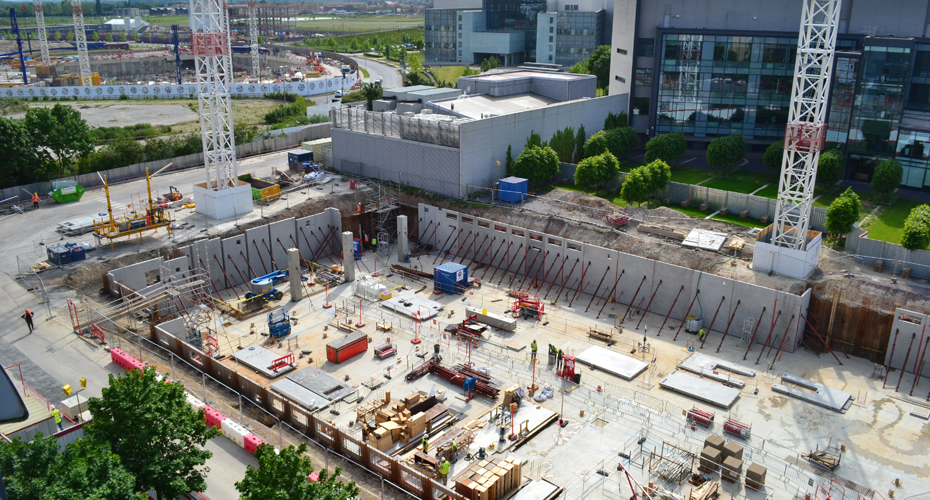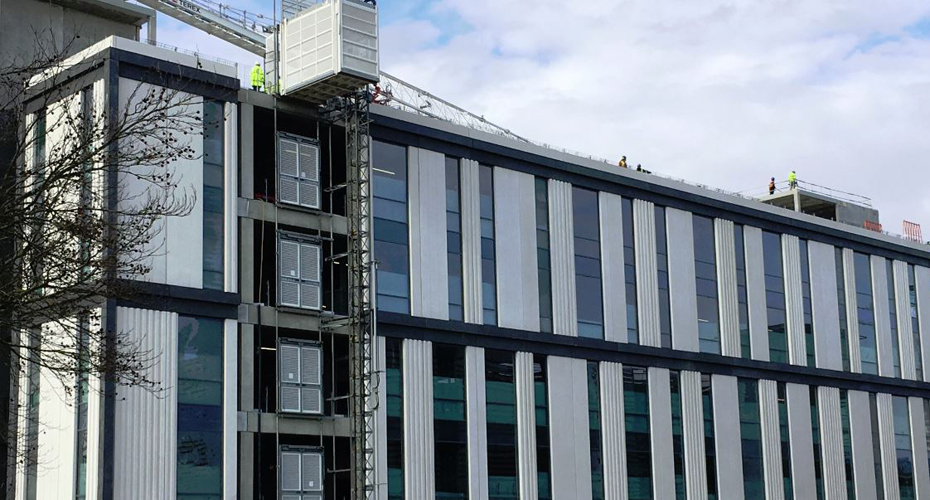Find out more about the Capella building construction process on PCE's website.
Capella biosciences research laboratory
VES collaborated with PCE Ltd to ensure the Capella biosciences laboratory could be constructed off-site while still meeting stringent vibration control requirements.
PCE Ltd, a leading design and build specialist contractor of offsite engineered Hybrid structures, collaborated with Kier Construction on the Capella biosciences research laboratory for the University of Cambridge. They engaged VES to assist in the design process by ensuring vibration control requirements were met.
The original building design was an on-site in situ concrete structure by Consultant Engineer Arup, but due to limited construction site space, PCE wanted to ensure their offsite construction philosophy would mean the finished structure complied with stringent vibration control requirements. This vibration control was essential due to the extremely vibration-sensitive laboratory equipment to be installed on completion of the facility.
While initial calculations by PCE inferred the specification could be achieved, they required specialist knowledge to assist with design concepts and prove by post-construction physical site testing that the design met vibration specification requirements. They therefore contacted Professor Paul Reynolds of VES to provide this assistance.
Developing the building design
VES worked with PCE, the main contractor and the client’s design team, to develop the initial PCE design concept of precast concrete prestressed solid floor units, supported on composite steel beams, with an in situ concrete topping that had a reduced floor thickness compared to the original client’s concept of an in situ concrete structure.
Full-scale testing
Following the construction of a floor level, VES conducted a full scale test to determine the actual vibration response. Test results showed the offsite engineered theoretical design approach met the requirements of the original specification.
The collaboration between PCE and VES demonstrated that offsite construction methods can be adopted for buildings that require stringent vibration control, in line with the growing trend and Governmental drive for more construction to be based on offsite construction methods.
Garry Langston, Pre-Construction Director for PCE, said:

Without the involvement of VES, it may not have been possible to provide the offsite construction solution that provided the client with a reduced construction programme, a significant reduction in the number of site operatives and vehicle deliveries required that was so advantageous for such a project on the busy and congested Addenbrookes Hospital campus.
Engaging the specialist services of VES at an early stage of the design process to give certainty in the resolution of the low vibration specification reduced the design and approval process that might otherwise occurred, and ensured an offsite construction solution, whilst the post-construction testing gave the reassurance the client required.
Garry Langston - Pre-Construction Director, PCE Ltd

More information
-
Consultancy and industry: Find out more about how we can help you and how to get in touch
-
Research: Meet our academic staff and view their research profiles



